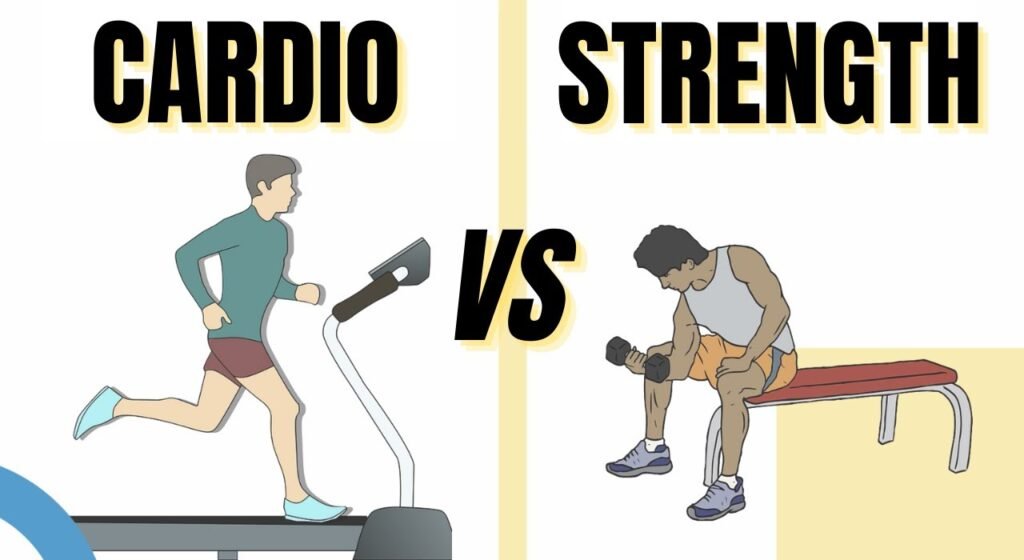Regarding fitness, strength training has become a highly effective tool for weight loss. Beyond conventional exercise sessions, weightlifting offers a versatile approach for reducing weight, enhancing metabolism, and achieving a lean body shape. This post delves into the intricacies of weight loss and strength training, providing a comprehensive understanding and practical guidance to optimize your exercise program.
Strength Training and Weight Loss
Resistance training, also known as strength training, is a set of exercises designed to increase muscle strength and endurance by opposing a force or weight. Strength training improves muscle mass, thereby increasing the resting metabolic rate, unlike aerobic activities that primarily burn calories during the workout. This implies that even at rest, your body continues to burn calories, which helps you lose weight in the long run. Strength training can help you control or reduce weight and boost your metabolism, enabling you to burn more calories, according to the Mayo Clinic.
Benefits of Strength Training for Weight Loss
Increased Muscle Mass
Muscle tissue burns more calories than fat tissue, even when at rest. 5 Proven Strategies, By increasing your muscle mass through strength training, you enhance your body’s ability to burn calories throughout the day.
Enhanced Metabolic Rate
Strength training increases your resting metabolic rate (RMR), resulting in a higher calorie burn over time. This metabolic enhancement is crucial for achieving and maintaining sustainable weight loss.
Improved Body Composition
While the scale may not initially show significant changes, strength training helps reduce body fat percentage and increase lean muscle mass, leading to a more toned and defined physique.
Long-Term Weight Management
Incorporating strength training into your routine helps maintain weight loss by preserving muscle mass, which is often lost during weight reduction.
Designing an Effective Strength Training Program

Frequency and Duration
For optimal results, engage in strength training exercises at least twice a week. Each session should target major muscle groups and last between 45 to 60 minutes.
Exercise Selection
Focus on compound movements that work multiple muscle groups simultaneously, such as squats, deadlifts, bench presses, and rows. These exercises are efficient and effective for building strength and burning calories.
Progressive Overload
Gradually increase the weight, frequency, or number of repetitions in your strength training routine to continually challenge your muscles and stimulate growth. This principle, known as progressive overload, is essential for ongoing improvement.
Rest and Recovery
Allow adequate rest between workouts to enable muscle recovery and growth. Overtraining can lead to injuries and hinder progress, so be sure to include at least one rest day between strength training sessions.
Nutrition and Strength Training
Complement your strength training regimen with a balanced diet rich in protein, complex carbohydrates, and healthy fats. Protein is vital for muscle repair and growth. Aim for a daily protein intake of 0.7 to 1 gram per pound of body weight, as recommended by fitness experts.
Combining Cardio and Strength Training
While strength training is beneficial for weight loss, incorporating cardio exercises can further enhance calorie burn and improve cardiovascular health. A balanced fitness program that includes both strength and cardio workouts yields the best results for weight loss and overall health.
Common Myths About Strength Training and Weight Loss
Myth 1: Lifting Weights Makes You Bulky
Contrary to popular belief, strength training does not necessarily lead to a bulky physique. Building significant muscle mass requires specific training and nutrition strategies. For most individuals, strength training results in a toned and lean appearance.
Myth 2: Cardio is Better for Weight Loss
While cardio exercises burn calories during the activity, strength training increases muscle mass and boosts metabolism, resulting in a higher calorie burn over time. Combining both forms of exercise is the most effective approach.
Myth 3: You Need to Lift Heavy Weights
Various resistance levels can achieve practical strength training. The key is to challenge your muscles progressively, whether using bodyweight exercises, resistance bands, or free weights.
Real-Life Success Stories
Numerous individuals have successfully lost weight and improved their health through strength training. For instance, Nicole Dvoracek lost eight stone by focusing on strength training, protein intake, and abandoning restrictive diets. Similarly, Dr. Simon Doyle reduced his body fat from 19% to 10% in three months by incorporating full-body strength workouts and dietary adjustments.
Summary
Beyond helping one lose weight, strength training is a potent and efficient approach for weight loss, offering several advantages. Strength training can help you reach and maintain a healthy weight by increasing muscle mass, boosting metabolism, and improving body composition. Plan frequent strength training sessions for your fitness program; balance them with a healthy diet and incorporate cardio activities for optimal results. Recall that success in your weight loss path depends mostly on regularity and increasing challenges.
FAQ
Q: Can I lose weight by lifting weights alone?
Yes, strength training can lead to weight loss by increasing muscle mass and boosting metabolism. However, combining it with cardio exercises and a balanced diet enhances results.
Q: How often should I do strength training for weight loss?
Aim for at least two to three strength training sessions per week, targeting all major muscle groups.
Q: Do I need to lift heavy weights to lose weight?
Not necessarily. The key is to progressively challenge your muscles, which can be achieved with various resistance levels, including bodyweight exercises.
Q: Will strength training make me bulky?
Building significant muscle mass requires specific training and nutrition. For most individuals, strength training results in a toned and lean physique, not bulkiness.
Q: Is strength training suitable for beginners?
Absolutely. Beginners can start with bodyweight exercises and gradually incorporate resistance as they build strength and confidence.
Q: How does strength training compare to cardio for weight loss?
While cardio burns more calories during the activity, strength training increases muscle mass and metabolism, resulting in a higher calorie burn at rest. Combining both is most effective.

